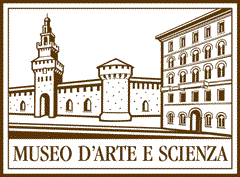

Gottfried Matthaes
www.spectroscopyforart.com Last updating: 25/07/2013
|
|
|
|
 |
|
|
|
Gottfried Matthaes |
|||||
|
|
|
The spectroscopic Dating of Art Objects |
|
|
Instructions on sample taking and prices |
|
|
|
|
|||||||||||||
For more information: www.IvoryAuthenticityandAge.com
|
The scientific
laboratory of the "Museo d'Arte e
Scienza" |
|
Museo d'Arte e Scienza - Milan |
|
|
The Museum laboratory’s
mission is to improve existing scientific methods and
elaborate new methods for the ascertainment of the
authenticity of art objects. The laboratory’s instruments
and know-how for the determining of authenticity are at the
disposal of collectors, art experts, restorers, art
galleries and museums.
(The staff of the laboratory, who speak the main European
languages, are at your disposal for any explanations).
The laboratory
of the Museo d'Arte e Scienza is a non-profit
facility and is independent from every point of view. |
|
Tests carried out by the
laboratory:
|
|
|
|
|
|
|
Spectroscopic dating and characterization of wooden objects |
Microscopic tests on paintings, antique bronzes, excavated pottery, etc. |
|
|
|
|
|
|
Examination of underlying layers using infrared reflectography |
Analyses |
Analyses with |
|
|
Further analyses performed by
the laboratory: |
|
|
For further info: |
www.Museoartescienza.com |
Examples of the applicability of spectroscopic dating
|
|
|
|
|
 |
|
paintings and frames |
icons |
beams |
musical instruments |
furniture |
|
|
|
|
|
|
|
statues |
clocks |
weapons |
African art |
Oriental art |
|
and many other possibilities |
||||
|
www.MuseoArteScienza.com - Sections of the "Museo d'Arte e Scienza": 6 rooms dedicated to the ascertainment of authenticity in art and antiques, 5 rooms on Leonardo da Vinci's "Treatise on Painting" and his activities in Milan, 5 rooms dedicated to African Art and Buddhist Art, 2 Scientific Laboratories. www.LeonardoDaVinciMilano.com - Two permanent exhibitions: "Leonardo Citizen of Milan" and "Appreciating Art through the Eyes of Leonardo" from his "Treatise on Painting". www.AuthenticAfricanBronzesandCeramics.com - Dedicated to the authenticity of African artworks in bronze, stone and pottery. The scientific laboratory of the Museo d’Arte e Scienza has developed valid methods for telling authentic African objects from copies and fakes. www.ArtAndScienceHandbook.com - The most complete and scientifically valid guide to ascertaining the authenticity of European and non-European antiques on an objective basis (540 pages and more than 2,000 colour illustrations in 3 volumes and 3 languages).
www.Paintingsauthenticity.com -
Information about the authenticity of modern paintings and antique
paintings.
www.AntiqueFurnitureAuthenticity.com -
A list of possible
methods for determining the authenticity of furniture based on objective
factors. www.Excavatedartauthenticity.com - "A list of all the possible ways of determining, on the basis of objective factors, the authenticity of excavated pottery, glass or bronze items from Southern Italy, the Mediterranean Basin, China and South America.". www.AfricanArtAuthenticity.com - "Art and Life in Black Africa", The African Art didactic section of the Museum (5 rooms and over 350 objects).
www.Matthaes.org
-
The history of
the G. Matthaes Foundation
from the opening of the painting school www.CopiesAndFakesInArt.com - Ample further descriptions for ascertaining authenticity in art in the individual fields of antiques. www.IvoryAuthenticityAndAge.com - Ivory, bone and horn can now be spectroscopically dated and accurately identified. www.arteautentica.it - The Museum's scientific laboratory is in charge of the investigation of the authenticity in art and antiques and is available to individuals, collectors, art experts, restorers and museums.
JOIN OUR MAILING LIST TO RECEIVE OUR NEWS!
Museo
d’Arte e Scienza di Gottfried Matthaes S.R.L.
|